Growing Moss Indoors (and Outdoors): A Detailed Guide
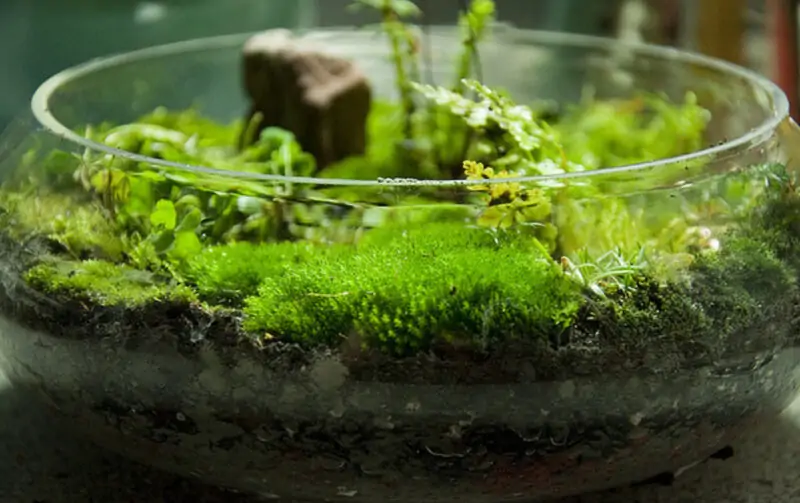
Have you ever considered growing moss indoors? Moss is a versatile and resilient plant that can add unique beauty to any indoor space. Not only does it provide aesthetic value, but it also comes with several benefits such as improving air quality and reducing noise pollution.
In this article, we will explore everything you need to know about growing moss inside your home. We will discuss the different types of moss suitable for indoor growth and how to care for them properly so that they grow well. We will also mention common problems encountered when cultivating these plants indoors and their solutions.
Growing Moss Indoors: Overview
Growing moss indoors might seem like an unconventional idea at first glance. However, once explored further, it becomes clear why so many people are jumping on board with this trend! Indoor gardens have been a popular choice among homeowners looking for ways to enhance their living environment by bringing nature inside. And what better way than incorporating one of the most ancient plant species known – moss!
Moss has long been used as ground cover in outdoor gardens due to its ability to retain moisture while still allowing water to penetrate down below the soil surface level. This makes maintaining healthy soil conditions easier over time. The same qualities make them perfect candidates for growing your moss within terrariums or even on vertical walls, but more about those options later.
Benefits of Cultivating Moss Plant Indoors
Did you know that aside from adding visual appeal, there are other benefits associated with having an indoor garden filled with lush greenery? For starters, they help purify the air, essentially acting as natural humidifiers, thereby promoting respiratory health by removing toxins found within enclosed spaces such as homes and offices. They require little upkeep compared to traditional houseplants, making caring for them easy enough for anyone, regardless of experience level.
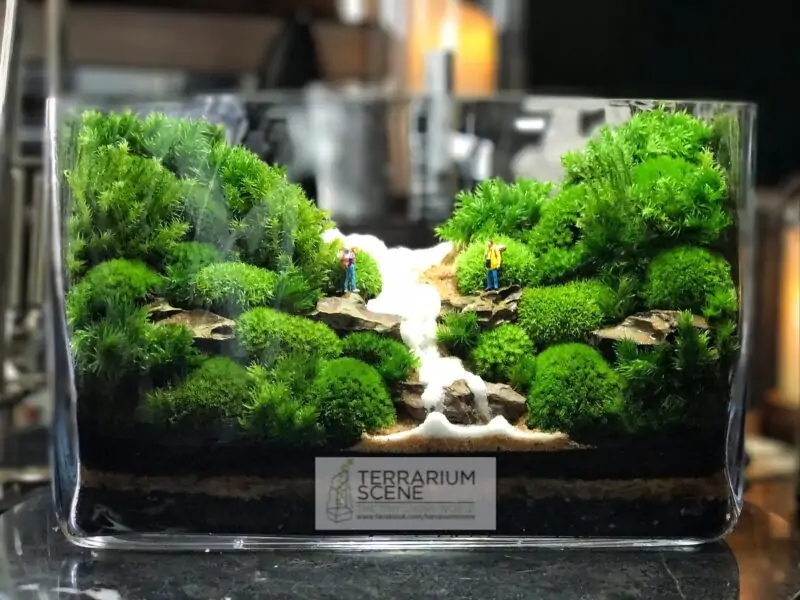
What is Moss?
Before diving into all aspects related specifically to cultivating various types of plants under controlled environments (indoors), let’s take a closer look at understanding the characteristics of moss:
Moss:
- Is not technically considered a plant
- Moss doesn’t have leaves, stems, or roots like typical plants do
- It is instead classified as being part of the “nonvascular” group of organisms
- Typically found in damp areas where it grows by absorbing water and nutrients through its entire surface area
These feisty little guys are resilient enough to grow almost anywhere, requiring very little maintenance once established, making them perfect candidates for indoor cultivation too! Differentiating Moss from Other Plants
One distinguishing characteristic that sets moss apart from other types is how they reproduce – unlike most flowering plants which rely on seeds to propagate themselves forward; mosses produce spores.
Another thing about these non-flowering entities is that moss thrives in environments where nothing else can! They make excellent ground covers because they can withstand harsh conditions while still keeping soil moisture levels high.
Types of Moss Varieties for Indoor Growth
Now let’s get into the topic that most likely brought you here: growing your own collection within your home environment! Here we will go over the different varieties available today, along with tips on how to cultivate each successfully.
Local Moss Varieties
If you’re interested in cultivating local varieties, then start by looking around outdoors first since there’s a good chance some already exist naturally nearby. This approach makes sense as these species have already adapted to survive specific climates, soil types, and rainfall patterns present in this region.
Tip: When collecting samples, avoid taking large amounts out at once to ensure the population remains healthy throughout the process.
Once located, observe the habitat carefully and note down everything such as location type, sunlight exposure, and temperatures. Collect handfuls gently, place them inside a plastic baggie, and bring them back indoors to study further and determine the best course of action necessary for their care and possible success rate later on (we’ll be getting more details below).
Some examples of local moss varieties include:
- Feather-moss (Pleurozium schreberi)
- Sphagnum mosses
- Hair-cap moss
Each variety has unique features and ideal requirements for thriving indoors and outdoors.
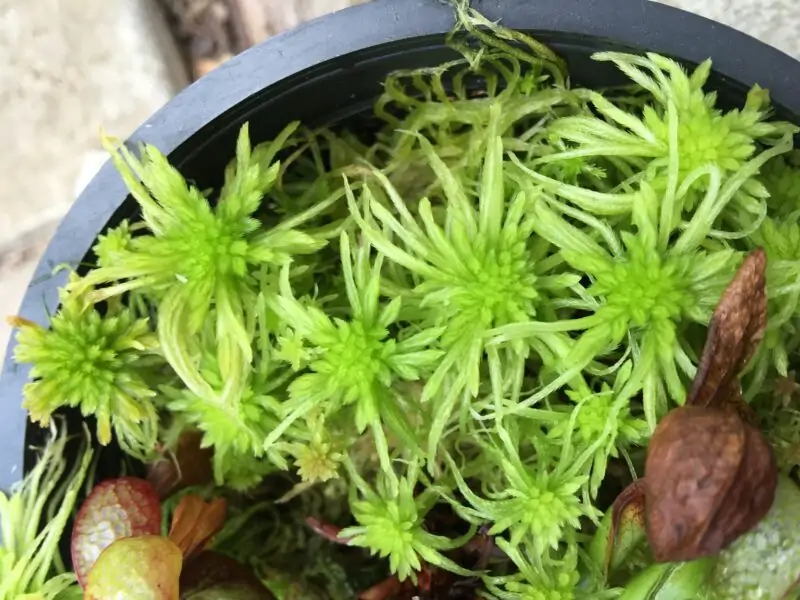
Decorative Spanish Moss
Spanish moss is a well-known decorative plant variety that has been used for centuries both indoors and outdoors. It’s native to North America, Central, and South America and is popular due to its delicate appearance.
Characteristics of Spanish Moss
- The plants have long stems covered with tiny leaves
- They grow in dense clusters
- They can grow without any soil, which makes them a great option for hanging baskets or even on walls!
Growing Spanish Moss Indoors
It’s easy to start growing: simply soak clumps in water for 24 hours, then hang them wherever you like (avoid direct sun). Mist regularly to keep moisture levels high while avoiding over-watering. With proper care, Spanish moss can easily last several months before needing to be replaced!
Moss for Terrariums
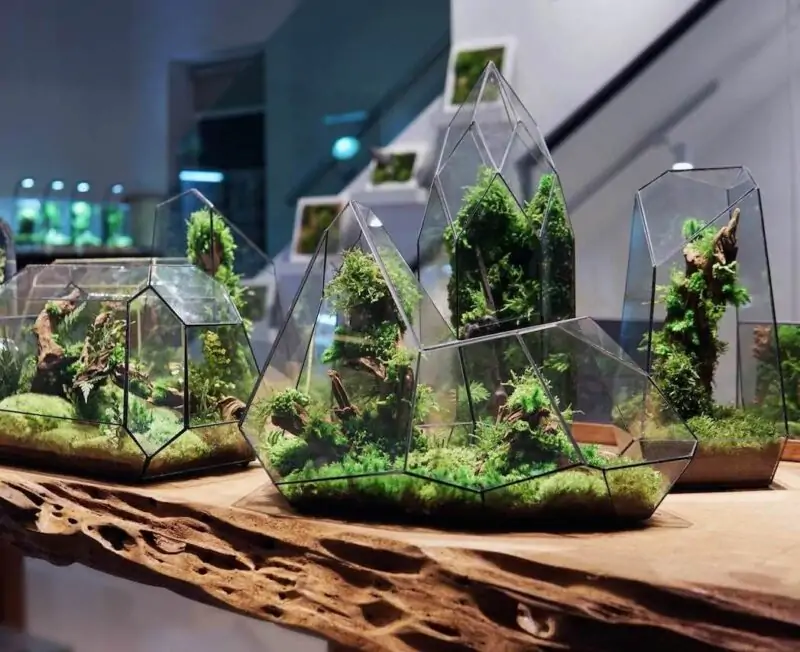
Terrariums are essentially miniature ecosystems within enclosed glass containers filled with plants, making them perfect indoor gardening solutions for anyone lacking outdoor space but still wanting to bring nature inside their home environment. Here, we’ll discuss suitable types of mosses ideal for creating thriving terrarium environments.
Choosing the Right Type of Moss for Terrariums
When selecting species, consider the following factors:
- Light requirements
- Soil type preference
- Moisture needs
Some good options include Cushion moss (Leucobryum glaucum), Feather-moss (Pleurozium schreberi), or Hair-cap moss. If you want to create a unique look, try combining several different varieties together to see which combination works best for the overall aesthetic desired.
Helping Moss Grow Successfully
Now let’s get into what actually goes into raising these beautiful green babies successfully under controlled conditions in indoor spaces.
Preparing for Successful Growth
Before planting, make sure all supplies are gathered for the necessary success, including potting material, drainage rocks, a plastic covering to cover the bottom of the container, medium-sized pebbles, etc. Once ready, fill the container with a mix of either perlite, vermiculite, or sphagnum peat moss, ensuring a well-drained substrate that allows roots to breathe properly and avoids rot and disease later down the line.
Tip: Place decorative rocks or coarse sand on top of the substrate surface to create a natural-looking environment.
Tips and Tricks for Successful Indoor Moss Growth
- Let the moss have the right amount of light
- Care for your moss by maintaining proper moisture levels
- Deal with pests in indoor moss gardens
With a little effort, these plants can thrive indoors, adding a unique touch to your home decor!
Caring for Moss Indoors
Caring for moss indoors can be an enjoyable and rewarding experience, as these plants add a unique touch of nature to your living spaces. To ensure the optimal growth and health of your indoor moss, follow these helpful tips:
Providing The Right Amount Of Light
One of the biggest challenges in growing moss indoors is providing enough sunlight without drying out the soil or causing the leaves to develop yellow or brown burn marks as a result of sun scorching. The best approach is to provide indirect lighting, keeping the moss away from direct sunlight sources to avoid potential harm from excessive UV rays while ensuring they’ve not kept in overly dark areas either. Moderate light intensity is preferred for indoor moss growth.
Maintaining Proper Moisture Levels
Over-watering is a common mistake new growers make when starting to raise their own moss collection indoors. To prevent this, it’s important to check the soil medium regularly to ensure it stays moist while avoiding excess water retention at the bottom of the container, which can lead to root rot or other diseases. A good rule of thumb is to mist the moss lightly every day, keeping it just damp enough for it to thrive.
Tip: If using terrariums, opt for distilled tap water, filtered water, or rainwater instead of regular tap water for the moss, as the latter may contain chemicals that could harm the delicate ecosystems within enclosed glass containers over time due to extended chemical exposure.
Dealing With Pests In Indoor Moss Gardens
While mosses are typically low-maintenance plants, pest issues can still arise, such as fungus gnats, mites, scale insects, and aphids. While these pests can be annoying, fortunately, there are treatment options available to combat each type effectively, depending on the severity of the infestation and whether symptoms are noticed at an early stage. Always remember to follow the instructions carefully, as provided on the manufacturer’s label for the product used (organic or synthetic).
By providing the right amount of light, maintaining proper moisture levels, and dealing with pests promptly, you can ensure the optimal growth and health of your indoor moss garden, creating a stunning and natural addition to your living space.
Light Requirements for Moss to Grow
Understanding the light requirements for different types of moss is crucial for successfully growing them in controlled environments:
Understanding Ideal Light Conditions
Moss plants generally prefer indirect lighting. Direct sunlight exposure can lead to yellowing leaves and even scorch or burn marks on delicate plant surfaces.
Adjusting Light Exposure For Different Types of Moss
Some species of moss tolerate more light than others, so take care to research each variety before selecting the desired location for cultivation. Help the moss thrive by placing it near windows or under grow lights (LED lights are preferred) to mimic natural daylight cycles throughout the year.
Keeping Moss Alive Indoors: Moisture Requirements
Water is an essential life source for all plants, including mosses. However, too much water could waterlog the roots, leading to rot, while not enough water can cause wilting or leaf drop. Here are a few tips to help maintain optimal moisture levels:
Water Frequency And Amount
When watering, make sure to pour slowly, allowing time for the soil to absorb the water properly without pooling at the bottom of the container, which could damage the root system. A good rule of thumb is to mist lightly every day, ensuring the moss stays just damp enough to thrive.
Tip: Use distilled tap water, filtered water, or rainwater instead of regular tap water, as the latter may contain chemicals that could harm the delicate ecosystems within enclosed glass containers over time due to extended chemical exposure.
Tips for Maintaining Optimal Moisture Levels
Check the substrate regularly to ensure it stays moist, and avoid over-watering. However, make sure the moss never dries out completely. Too little water will cause wilting or leaf dropping, while excess water at the base may lead to root rot or promote disease growth later on.
Growing Moss in a Terrarium
Terrariums provide the perfect environment for cultivating thriving greenery in small spaces by offering controlled conditions required for various types of moss to survive healthily on a long-term basis.
Benefits Of Using A Terrarium For Moss Growth
- Controlled environmental factors
- Easy maintenance
- Can be kept anywhere in your home
In order to create a successful terrarium, follow these steps:
- Choose the right type of container based on the size requirements and intended use.
- Prepare the potting mix and drainage material beforehand, filling the container 3/4 of the way, leaving room to add rocks or decorative stones as a surface layer.
- Place the chosen moss varieties inside, adding additional decorative elements if desired.
- Mist regularly to avoid over-watering while ensuring the moss stays moist throughout the growth process.
By following these guidelines and considering the unique requirements of indoor moss cultivation, you can create a beautiful, thriving moss garden that adds a touch of nature to your home.
Adding Plants to Indoor Moss Gardens
Moss gardens are a perfect way to incorporate greenery inside homes without taking up too much space. When combining moss with other plants, select those that thrive well in low-light environments and have similar requirements and conditions to the moss species being grown. Here are a few examples of great pairings:
- Ferns
- Succulents
- Air plants
Make sure to research each plant beforehand to ensure compatibility and achieve the desired overall aesthetics.
Want to Grow Moss Inside on a Wall? Tips & Tricks
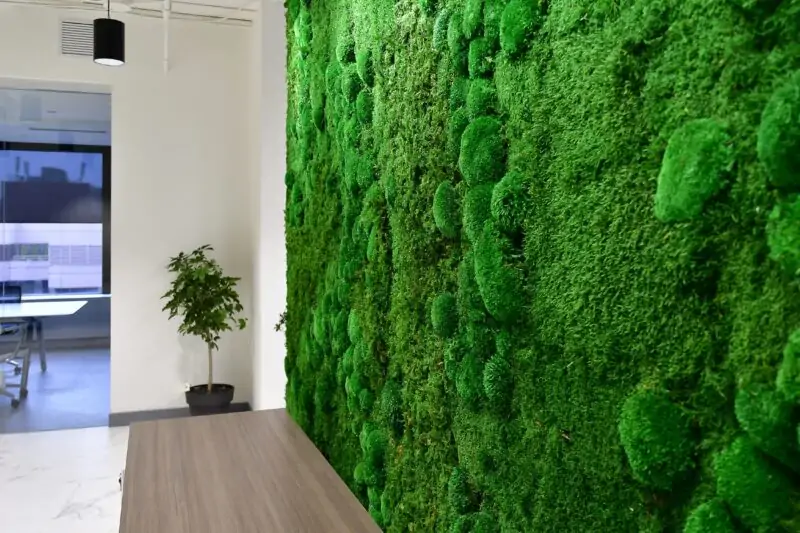
Growing moss on a wall can be a very rewarding experience, but it’s not as simple as planting moss on a vertical surface. It requires some patience and attention to detail, but the final result is worth it.
To grow moss on walls, start by preparing the wall’s surface by cleaning any debris or dirt that may interfere with growth. Apply a layer of moss milk, a mixture of buttermilk, and moss spores. Spread the mixture evenly on the wall with a brush or spray bottle.
After applying the moss milk, keep an eye on it and ensure that it stays moist in order for growth to occur properly. In about two weeks’ time, you should start seeing tiny sprouts emerging from your wall.
Caring for vertical moss surfaces is slightly different than caring for horizontal ones because gravity affects how moisture moves through the plant’s structure. Here are some tips:
- Keep your moss hydrated by misting it frequently with water.
- Check regularly to see if any parts of your vertical surface have dried out; rehydrate as necessary.
- Trim back any overgrown sections using scissors or pruning shears.
Common Problems with Growing Moss Indoors
While growing indoor plants can be a rewarding experience, they are susceptible to certain problems that may stunt their growth or even lead to death. Here are a few common issues many gardeners face when growing moss indoors:
Drying out of Moss
Moss requires a consistent moisture level to survive and thrive. If allowed to dry out too much, it could die off completely. To prevent this, make sure to maintain optimal watering frequency and amount and avoid letting the soil become bone-dry.
Pest Infestation
Indoor pests such as spider mites, whiteflies, mealybugs, and scale insects love munching on the soft, delicate foliage found in indoor gardens, including those made up primarily of green coverings like leaves, stems, flowers, and buds.
To combat these pests, try spraying the affected areas with a diluted solution of insecticidal soap, neem oil, or horticultural oils, which can help remove mild infestations without harming the environment or beneficial insects.
Insufficient Light Exposure
Another issue facing indoor gardeners is insufficient light exposure, particularly during winter months when days are shorter and darker. Without sufficient sunlight, the photosynthesis process is stunted, leading to poor overall health and development of the plants within the space.
Try positioning your moss garden near windows to allow access to natural light, or supplement with artificial grow lamps to provide full-spectrum lighting that mimics the sun’s rays throughout the day and night hours.
FAQs
Moss prefers low to medium light, and it can thrive in areas with indirect or filtered sunlight. Direct exposure to the sun’s rays can cause damage or dry out the plant.
It is recommended that you water your indoor moss garden once a week, aiming for a consistently moist but not soggy substrate.
Yes! Vertical surfaces, such as walls, are perfect for growing different types of moss using techniques like applying “moss milk.”
Conclusion
In conclusion, growing and maintaining a healthy indoor moss garden can be a rewarding experience. By focusing on essential factors like light, water, and humidity, you can create a beautiful moss garden. Attention to temperature, pest control, cleanliness, trimming, and nutrients is also crucial.
Following the guidelines in this article makes growing moss indoors easy: you don’t have to have a green thumb to achieve success. With patience and dedication, you can enjoy the stunning greenery and unique textures moss offers. Bring a touch of nature into your indoor space with a thriving moss garden.